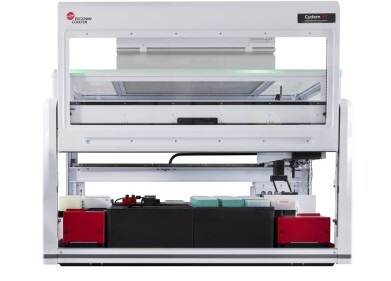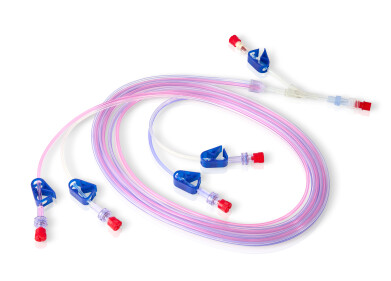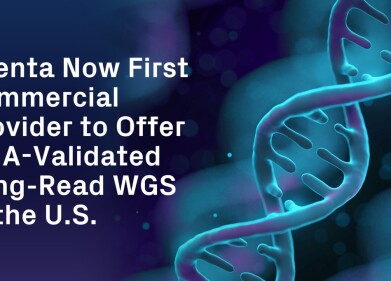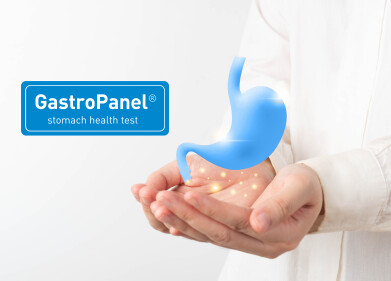Laboratory products
How to Cut Budgets and Improve Hospital Infection Control
Sep 15 2016
The inadequate assessment of cleaning procedures within hospital environments is the biggest source of on-cost with lost opportunities to save money as well as improve infection control. The patient environment is known to be closely associated with infection risks and superbugs are now resistant to almost all antibiotics. ATP cleanliness monitoring equipment supplied by Hygiena International can provide a simple, low cost solution to driving down infection rates.
Everyone accepts that a high standard of hygiene is an essential primary preventative measure in the fight against infection. The patient environment and high count touch surfaces are recognised as reservoirs of contamination. However, cleaning is often considered a low skilled task and a burdensome on-cost that is often treated as a soft target for cost cutting, which can be subsequently prove to be a false economy.
Effective cleaning is a science that requires attention to detail, but it is frequently taken for granted and its importance also under-estimated. Cleaning is often out-sourced to the lowest cost provider and is thus frequently inconsistently delivered, inadequately measured and also undervalued.
Failure to clean properly however, has a huge cost. The NHS spends £725 million per year on cleaning of which 90% is the labour cost and there is only one opportunity to get it right. Research also shows that only 40% of cleaning is delivered against policy, resulting in a potential 60% wasted resource costing £435 million per year. The cost benefit of effectively cleaning has been calculated at £57,000 per ward per year excluding lost bed days. However, the NHS Productivity review 2016 showed that there is a saving of £93 million from an improvement in cleaning alone. The direct cost of an HCAI is £10,000 per incident and the WHO estimates that 300,000 patients in the UK are affected by HCAI, costing £1 billion. The NHS Litigation Authority pays out >£1 billion a year in compensation. Indirect costs associated with HCAI include additional bed days costing £400 per day as well as lost bed days. It is calculated that saving an average 1 day per hospital stay would save >364,000 bed days per year with a cost of >£15 million.
Visual assessment of cleaning is commonly used but it is subjective and only detects gross lapses in practice that results in a false sense of security that undermines infection control strategies. There are no measureable standards for cleaning until the recent recognition and acceptance of a simple, well proven method called ATP bioluminescence.
Measurement is the first step that leads to control and eventually to improvement. If you can’t measure something, you can’t understand it. If you can’t understand it, you can’t control it. If you can’t control it, you can’t improve it.
ATP bioluminescence is a simple rapid method for measuring for organic soil. It specifically measures adenosine triphosphate (ATP) which is the universal energy molecule present in all living things. The procedure requires a small hand held instrument and an all-in-one sample collection and testing device, these generating a numerical result in 15 seconds. This provides an objective yardstick and benchmark to describe and communicate levels of contamination and demonstrate what cleanliness really means. The use of ATP bioluminescence for cleaning verification is well established, and has the highest recommendation by the Rapid Review Panel of the Dept of Health and Public Health England in support of the fight against HCAI. The test is also recognised by the CDC in USA and is written into a standard for cleaning procedures in Denmark and Sweden.
Earlier adopters such as North Tees and Hartlepool NHS Trust have shown a consistent and marked improvement in cleanliness and reduction in infection rates since its introduction in 2008. The results have shown a >20% improvement in pass rates and a large reduction in fail scores to fewer than 5% with a corresponding decrease of 35% in C. difficile cases and a 39% reduction in infections per 10,000 occupied bed days. Monitoring officers, independent from nursing and environmental services staff, are assigned to act as project champions for individual facilities, reporting to departmental managers wherever poor cleaning was discovered and where corrective action is required. Monthly reports are circulated for cross-functional team meetings of nursing, facilities and infection control staff. This allows for open discussions on all cleaning and maintenance related issues and stimulates actions for improvement.
The Southport and Ormskirk Hospital NHS Trust have obtained impressive results in their drive to continuously monitor cleaning processes, so helping them reach their target of a clean and safe hospital. Several departments and services at this establishment have been helped to achieve their aims by the utilisation of ATP cleanliness monitoring equipment as supplied by the Hygiena International. This equipment, SystemSURE Plus, is recognised as the world’s best-selling ATP hygiene monitoring system and it has associated software to store reports for up-to 5000 programmable test locations, together with the creation of charts, graphs and reports etc.
The Hygiena ATP monitoring system was introduced at the Southport and Ormskirk hospital over five years ago, to help in their efforts to drive down infection rates. Val Hume (Domestic Services Team Leader) says that “it’s a great benefit to have and instant measure of cleanliness. ATP gives you a clean hospital”. Andrew Chambers (Consultant Nurse and Deputy Director of Infection Prevention and Control) said that “the results of ATP monitoring are incorporated into weekly infection prevention and control performance reports which are circulated trust-wide. It is there to encourage people and make them aware, and also adds a competitive edge to drive everyone to achieve a low score. If they’re doing a good job, it’s a low score and the staff are delighted. The benefit is that with ATP we can react immediately to the results on site and put any necessary interventions into immediate effect that way we’re safeguarding patients which is what it is all about”. All cleaning personnel are now very proactive and keen to embrace technology that provides an objective measurement of cleaning performance. This not only helps to safeguard patient welfare but also ensures the value for money of good cleaning performances.
The ATP test is also used in sterile services and endoscopy to replace the outdated protein test and to ensure the highest standards of cleaning are achieved. It is also used by dentists, ambulance and emergency vehicles, care homes and within the catering industry.
Implementing a simple, rapid, objective measurement system such as ATP has a major cost benefit by improving productivity, resource efficiency, staff motivation and communication, and reducing infection rates with their associated costs.
Digital Edition
Lab Asia 31.6 Dec 2024
December 2024
Chromatography Articles - Sustainable chromatography: Embracing software for greener methods Mass Spectrometry & Spectroscopy Articles - Solving industry challenges for phosphorus containi...
View all digital editions
Events
Jan 22 2025 Tokyo, Japan
Jan 22 2025 Birmingham, UK
Jan 25 2025 San Diego, CA, USA
Jan 27 2025 Dubai, UAE
Jan 29 2025 Tokyo, Japan




















